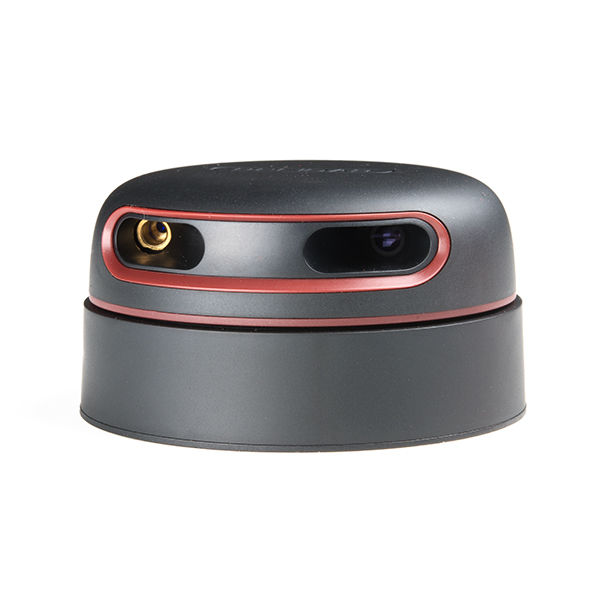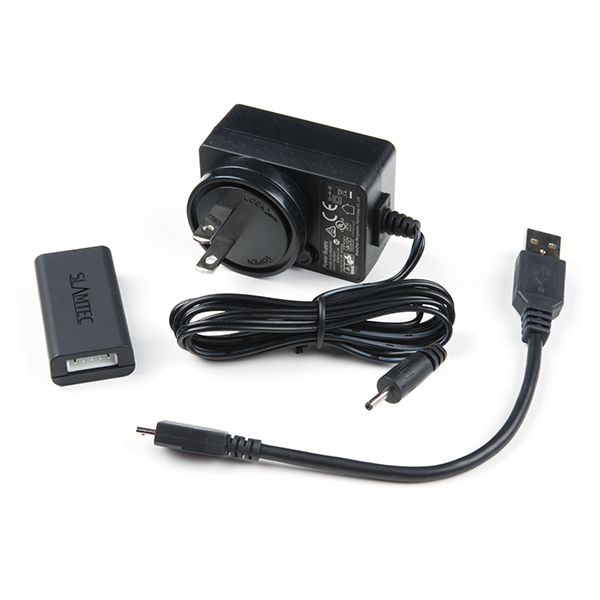RPLIDAR A2M8 360° Laser Range Scanner
The RPLIDAR A2 is a sleek, indoor, 360 degree 2D LIDAR. Each RPLIDAR A2 can take up to 8000 samples of laser ranging per second thanks to its high rotation speed. The on-board system can perform 2D 360° scans within a range of 12 meters (18m with a bit of firmware adjustment). Additionally, the generated 2D point cloud data can be used in mapping, localization and object/environment modeling!
The RPLIDAR A2M8 consists of a range scanner core and mechanical powering parts which makes the core rotate at a high speed. When it functions normally, the scanner will rotate and scan clockwise allowing you to be able to get the range scan data via the communication interface of the RPLIDAR and control the start, stop and rotating speed of the rotation motor via PWM. The typical scanning frequency of the RPLIDAR A2 360° Laser Scanner is 10hz (600rpm) with an actual scanning frequency that can be freely adjusted within the 5-15hz range according to the requirements of users.
The RPLIDAR A2 adopts a laser triangulation measurement system developed by SLAMTEC, which makes the RPLIDAR A2M8 have excellent performance in multiple indoor and outdoor environments without direct sunlight exposure. Also, before leaving the factory, every RPLIDAR A2 has passed strict testing to ensure the laser output power meet the standards of FDA Class I.
- Range: 0.15 - 12m
- Distance Accuracy: ~1%
- Angular Resolution: ~0.9°
- Measurement Frequency: 2000-8000Hz
- Scan Frequency: 5-15 revolutions per second
- Datasheet
- RPLIDAR A2 Overview
- RPLIDAR A2 Specs
- SDK (5MB Download)
- Firmware
- Slamtec Download Page
- GitHub
RPLIDAR A2M8 360° Laser Range Scanner Product Help and Resources
Core Skill: Programming
If a board needs code or communicates somehow, you're going to need to know how to program or interface with it. The programming skill is all about communication and code.
Skill Level: Competent - The toolchain for programming is a bit more complex and will examples may not be explicitly provided for you. You will be required to have a fundamental knowledge of programming and be required to provide your own code. You may need to modify existing libraries or code to work with your specific hardware. Sensor and hardware interfaces will be SPI or I2C.
See all skill levels
Core Skill: Electrical Prototyping
If it requires power, you need to know how much, what all the pins do, and how to hook it up. You may need to reference datasheets, schematics, and know the ins and outs of electronics.
Skill Level: Competent - You will be required to reference a datasheet or schematic to know how to use a component. Your knowledge of a datasheet will only require basic features like power requirements, pinouts, or communications type. Also, you may need a power supply that?s greater than 12V or more than 1A worth of current.
See all skill levels
Comments
Looking for answers to technical questions?
We welcome your comments and suggestions below. However, if you are looking for solutions to technical questions please see our Technical Assistance page.
Customer Reviews
No reviews yet.





The spec sheet says the cable is terminated with an XH2.54-5P connector. This implies 2.54mm (0.1") pitch, but all the JST XH series connectors I can find are 2.5mm pitch. Can anybody confirm this product has 2.54mm (0.1") pitch connector?
Does anybody have a good source for the mating connector? SFE doesn't seem to have them, nor any of my other standard shops. Amazon might sell them in connector kits but the product descriptions are so poorly written it is hard to tell.